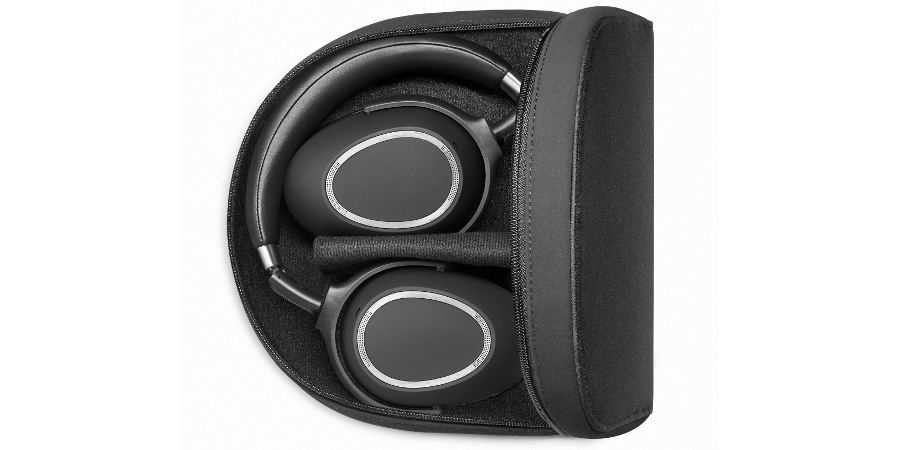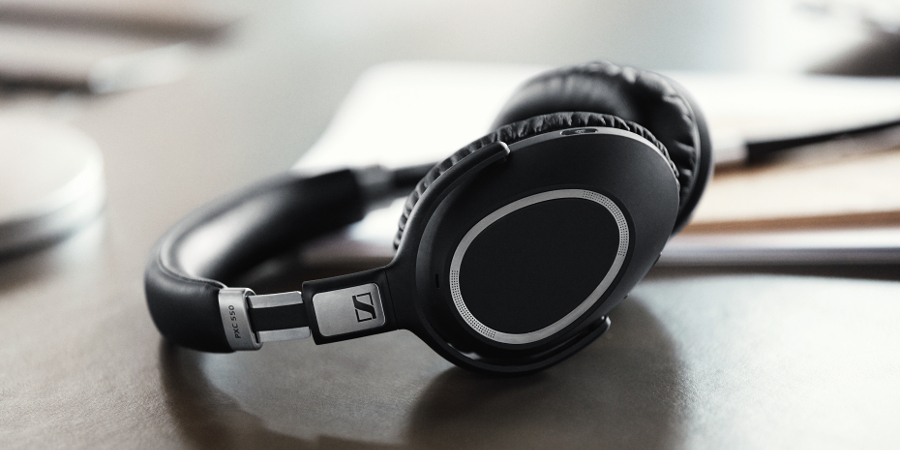Sennheiser’s Wireless Travel Headphones Offer 30 Hours of Battery Life
That’s more than a full day of playtime on a single charge.

Three things make headphones better for travel: their portability, how well they block ambient noise, and the ability to wear them continuously on extended trips (essentially, comfort + battery life).
Although other companies make fine travel cans, Bose has pretty much owned this market for a while—and that’s before recently releasing their wireless high-end headphones, the QC35 ($350). But Sennheiser thinks they might have a strong contender in their just-announced PXC 550 Wireless ($400), so let’s compare.

On the portability end, they naturally both fold up to fit into their respective travel cases (should you ever want to take them off). But the Sennheiser folds flat and is almost three ounces—roughly 27%—lighter than the Bose.
As opposed to the industry-leading dual microphone noise cancelation system in the Bose QC35, Sennheiser (highly regarded for their 70 years in the microphone space) has put a 3-mic array into theirs. More important than the mere number of mics, Sennheiser’s NoiseGard system can supposedly automatically adapt to the noisiness of your environment, a super concept if it works.
In terms of pure comfort, Bose is the benchmark; and their QC35 are rated for up to 20 hours of wireless listening and 40 hours wired (with noise canceling still active). Sennheiser’s PXC 550 look pretty comfy and are rated for an impressive 30 hours—we’re assuming that’s wired. So we’ll give Bose the edge in this category.

As far as other features, Sennheiser has it in spades.
First, the PXC 550 Wireless earcups feature touch controls, so you don’t need to fumble for buttons. Even better, they automatically pause your music when you take them off your head and automatically power down when you fold them.
The CapTune app allows you to control the sound itself, both in terms of managing playlists from multiple sources and customizing various equalization profiles to your liking. Additionally, a built-in volume limiter means you won’t get blasted when an otherwise jolting in-flight announcement interrupts your movie/music.
” tml-embed-width=”600″ tml-embed-height=”337″ tml-render-layout=”inline
Because sound quality is pretty subjective and we haven’t tested these two head-to-head, we can’t fairly determine the audio winner. But based on the smarter, richer feature set—tainted somewhat by past experience in listening to each brand’s products—we’re inclined to say we’d choose Sennheiser over Bose.
Of course, we welcome the opportunity for a direct personal comparison, especially since proper testing would involve needing to travel someplace adequately exotic to push their (and our) comfort and endurance to the limit.






